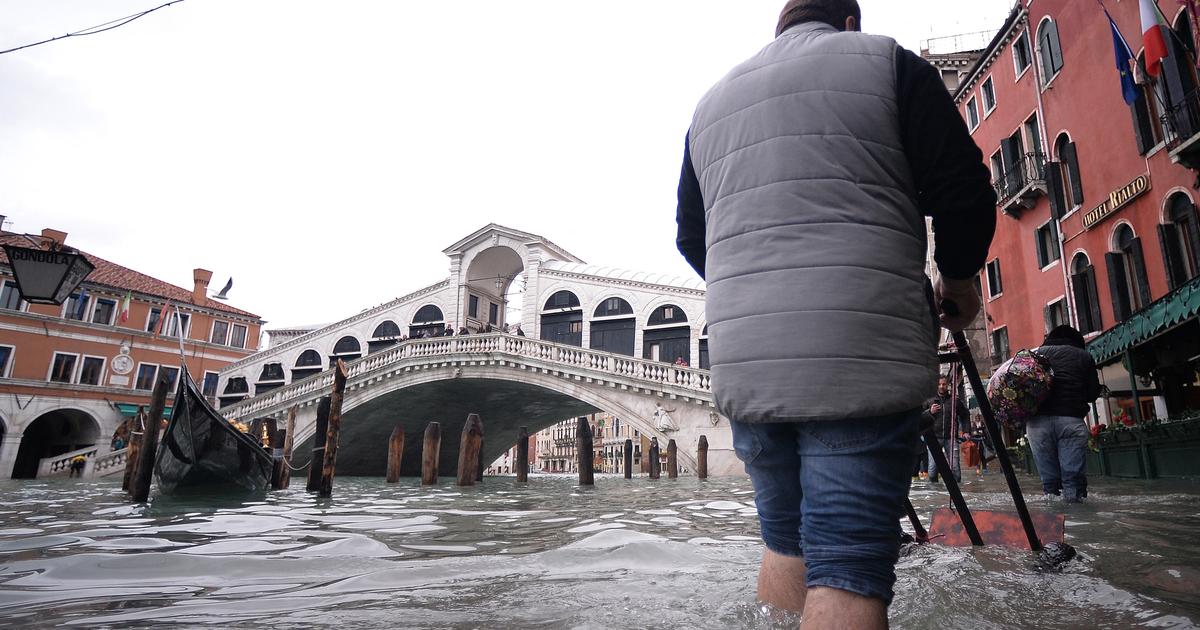According to the National Institute of Geophysics and Volcanology in Italy, the increase in the level of water, extreme tides and the collapse of the city and the lagoon threaten the city at the highest point.
Venice, the city of lovers, one of the most visited in the world, could see a significant part of its submerged lagoon by 2100 due to the continuous elevation of the sea level, exacerbated by the collapse of the soil. A study, published Tuesday, March 25, conducted by the National Institute of Geophysics and Volcanology in Italy (Ingv), highlights the need to strengthen the city protections in the floods in the decades.
The study, published in the scientific journal Remote Sensingcombined geodesic, satellite and topographic data in order to develop precise projections of sea level evolution until 2150. The researchers used advanced technologies such as satellite networks of GNSS stations (Global Navigation Satellite System) and opening radars of opening to estimate with great precision the movements of the soil and the elevation of the sea level in the lagoon from Venice.
A elevation of 3.47 meters by 2150
The projections are worrying: according to the scenarios envisaged, Venice could experience much higher sea levels than today. In 2100, in a scenario of the average sea level of 60 cm, events of extreme tides, such as those observed in 1966 and 2019, could raise the water to three meters.
Read too
Venice escapes registration as a UNESCO World Heritage Site
In the worst case, the study provides that the sea level could amount to 3.47 meters by 2150, exceeding the height of three meters from the Mose protection system. Designed in the form of a dike, this development at six billion euros aims to protect the city from major floods. But if researchers’ forecasts come true, 226 square kilometers could be overwhelmed, almost two thirds of the lagoon.
Another factor: soil collapse
Climate change is not the only cause of the risk of flooding. The City of Venice also faces a historic phenomenon of soil of the soil, which worsens the vulnerability of the lagoon. This phenomenon, where city soil sinks at a rate of up to 7 millimeters per year, exposes even more the lowest areas of the lagoon to the risk of flooding. “It is necessary that political decision -makers and local authorities update spatial planning plans and risk management plans as quickly as possible”, Alert Marcel Anzidei, first author of the study. “” Only responsible and conscious management will preserve the city, its population and a cultural heritage unique in the world of the consequences of the elevation of the sea level expected in the coming decades ”he concludes.

MobileSheets Forums – Profile of zeprimoweffe
wimicah – FYERS Community – Pick others' brains on Trading/Investing
Golden Multimedia Forum – Viewing profile – wimicah
wimicah
Jeff Hardy – Member Profile
Cadillac Society
wimicah
Pharmahub – Members: View: Dan Saiks
wimicah (Gryffindor) | Hogwarts is Here
wimicah's Content Feed
Fatal error:
pafiri – Members – Enscape
Alex Nelson
nirocor41 – Guild of Writers Gitea
Parimatch 123 Beacon Street, Boston, MA 02116 02116
DOTAFire :: DotA 2 Builds & Guides for Hero Strategy
User Profile – Nelson – Classifieds Opencars
Profile of nirocor
nirocor | Mixcloud
nirocor419's Profile | Hackaday.io
Heroes of the Storm (HotS) Builds & Guides, wiki, database and forums. HotS Hero Build Guides on HeroesFire Wiki!
Project 1999 – View Profile: deyeh69
tepani98
HuntingNet.com Forums – View Profile: deyeh
firabef98
deyeh | Published – MakerWorld
Axel Wilson – National Directory
Axel Wilson – HealthySeminars Mentorship Program
Fatal error:
deyeh – Profile – Laundry Nation Community Forum